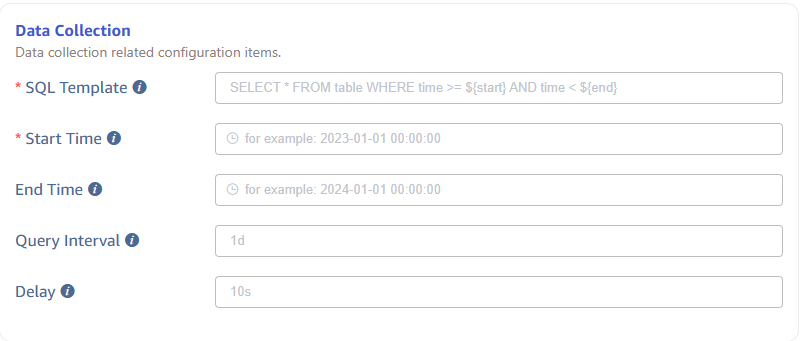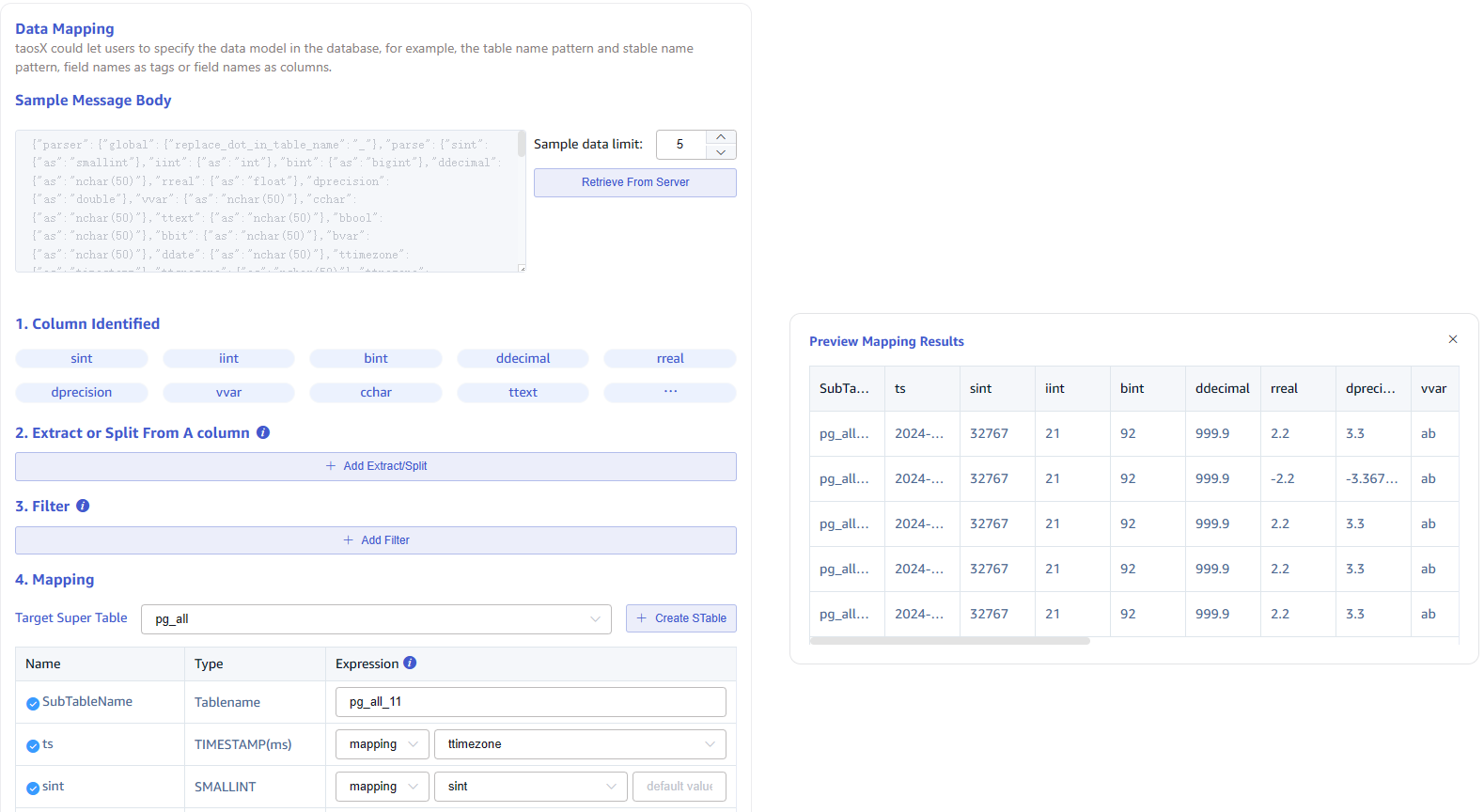PostgreSQL
The features or components discussed in this document are available in TDengine Enterprise only. TDengine OSS does not include these features or components.
This section describes how to create a data migration task through the Explorer interface to migrate data from PostgreSql to the current TDengine cluster.
Feature Overview
PostgreSQL is a very powerful, open-source client/server relational database management system with many features found in large commercial RDBMSs, including transactions, subselects, triggers, views, foreign key referential integrity, and sophisticated locking capabilities.
TDengine can efficiently read data from PostgreSQL and write it to TDengine, enabling historical data migration or real-time data synchronization.
Creating a Task
1. Add a Data Source
Click the + Add Data Source button in the upper left corner of the data writing page to enter the add data source page, as shown below:

2. Configure Basic Information
Enter the task name in the Name field, for example test_postgres_01.
Select PostgreSQL from the Type dropdown menu, as shown below (the fields on the page will change after selection).
Proxy is optional. If needed, you can select a specific proxy from the dropdown menu or click the + Create New Proxy button on the right to create a new proxy.
Target Database is required. You can click the + Create Database button on the right to create a new database.

3. Configure Connection Information
Fill in the connection information for the source PostgreSQL database in the Connection Configuration area, as shown below:

4. Configure Authentication Information
User Enter the user of the source PostgreSQL database, who must have read permissions in the organization.
Password Enter the login password for the user mentioned above in the source PostgreSQL database.

5. Configure Connection Options
Application Name Set the application name to identify the connected application.
SSL Mode Set whether to negotiate a secure SSL TCP/IP connection with the server or the priority of such negotiation. The default value is PREFER. Options include DISABLE, ALLOW, PREFER, REQUIRE.

Then click the Check Connectivity button, where users can click this button to check if the information filled in above can normally fetch data from the source PostgreSQL database.
6. Configure SQL Query
Subtable Field Used to split subtables, it is a select distinct SQL statement querying non-repeated items of specified field combinations, usually corresponding to the tag in transform:
This configuration is mainly to solve the data migration disorder problem, and it needs to be used in conjunction with SQL Template, otherwise, it cannot achieve the expected effect, usage examples are as follows:
- Fill in the subtable field statement
select distinct col_name1, col_name2 from table, which means using the fields col_name1 and col_name2 in the source table to split the subtables of the target supertable- Add subtable field placeholders in the SQL Template, for example, the
${col_name1} and ${col_name2}part inselect * from table where ts >= ${start} and ts < ${end} and ${col_name1} and ${col_name2}- Configure
col_name1andcol_name2two tag mappings in transform
SQL Template Used for the SQL statement template for querying, the SQL statement must include time range conditions, and the start and end times must appear in pairs. The time range defined in the SQL statement template consists of a column representing time in the source database and the placeholders defined below.
Different placeholders represent different time format requirements in SQL, specifically including the following placeholder formats:
${start},${end}: Represents RFC3339 format timestamps, e.g.: 2024-03-14T08:00:00+0800${start_no_tz},${end_no_tz}: Represents RFC3339 strings without timezone: 2024-03-14T08:00:00${start_date},${end_date}: Represents date only, e.g.: 2024-03-14To solve the problem of data migration disorder, sorting conditions should be added to the query statement, such as
order by ts asc.
Start Time The start time for migrating data, this field is required.
End Time The end time for migrating data, which can be left blank. If set, the migration task will stop automatically after reaching the end time; if left blank, it will continuously synchronize real-time data and the task will not stop automatically.
Query Interval The time interval for querying data in segments, default is 1 day. To avoid querying a large amount of data at once, a data synchronization subtask will use the query interval to segment the data retrieval.
Delay Duration In real-time data synchronization scenarios, to avoid losing data due to delayed writes, each synchronization task will read data from before the delay duration.

7. Configure Data Mapping
In the Data Mapping area, fill in the configuration parameters related to data mapping.
Click the Retrieve from Server button to fetch sample data from the PostgreSQL server.
In Extract or Split from Column, fill in the fields to extract or split from the message body, for example: split the vValue field into vValue_0 and vValue_1, select the split extractor, fill in the separator ,, and number 2.
In Filter, fill in the filtering conditions, for example: write Value > 0, then only data where Value is greater than 0 will be written to TDengine.
In Mapping, select the supertable in TDengine to map to, and the columns to map to the supertable.
Click Preview to view the results of the mapping.

8. Configure Advanced Options
The Advanced Options area is collapsed by default, click the > on the right to expand it, as shown below:
Maximum Read Concurrency Limit on the number of data source connections or read threads. Modify this parameter when the default parameters do not meet the needs or when adjusting resource usage.
Batch Size The maximum number of messages or rows sent at once. The default is 10000.

9. Completion
Click the Submit button to complete the creation of the data synchronization task from PostgreSQL to TDengine. Return to the Data Source List page to view the status of the task execution.